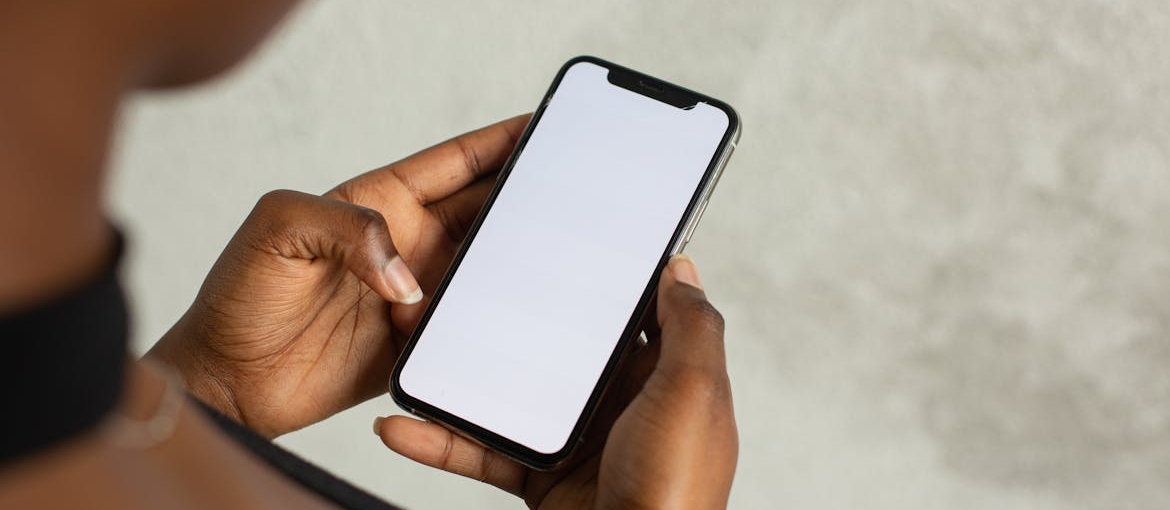Staying sober in today’s world can feel like a full-time job. Screens are everywhere. Social media, group chats, and constant notifications can wear you down. If you’re in recovery, that noise can quickly lead to stress, triggers, and old habits. You might not realize how much digital clutter affects your focus and mood. That’s where digital minimalism in recovery comes in. It’s not about cutting off the world—it’s about choosing what helps you heal. Learning to set limits online can make a real difference in how you feel each day. If you’re just starting out or have relapsed, places like detox centers in WV can support your first steps. But staying sober long-term may also mean changing how you use technology.
The Role of Technology in Substance Use and Recovery
Technology affects almost every part of modern life, including how we cope with addiction and recovery. While it can offer support, it also adds stress, triggers, and distractions. Many people don’t realize how social media, constant messaging, or digital noise affect their sobriety. Let’s take a closer look at the challenges that come with screen time—and why setting limits might be the missing step in your recovery strategy.

How Social Media Can Trigger Cravings
Many people use social media as a distraction. If you’re in recovery, this habit can backfire. Seeing posts about parties, old friends who still use, or even “funny” drinking content can reopen wounds. Your brain may associate those images with escape or comfort, even if you’re working hard to move forward. This is called a technology-induced escape from reality, and it’s common during early recovery.
It may start small—just scrolling during a bad day—but can quickly turn into a serious mental trigger. If you’re working on digital minimalism in recovery, removing these online stressors helps you stay grounded. Reducing social media use can give your brain room to reset. It also allows you to reconnect with real-life experiences that help you heal. Cravings often come when you feel disconnected. Cut the noise, and you reduce the risk.
The Pressure of Constant Connectivity During Recovery
Recovery asks for focus. Constant notifications don’t help. You might feel like you need to reply to every message or keep up with every online conversation. That pressure can wear you out. It creates stress, which can lead to triggers. Staying connected isn’t always helpful—especially in early recovery. People in an intensive outpatient program West Virginia residents rely on often talk about this. They say the pressure to respond 24/7 drains their energy.
Setting time blocks for tech use helps. So does muting non-urgent chats. This is where digital minimalism in recovery can really help. It gives you control over when and how you connect. Recovery is personal. You don’t owe instant access to anyone. Instead, give your time to things that help you stay sober—like sleep, therapy, and quiet moments offline.

Digital Overload and Mental Health in Sobriety
After detox, your brain needs rest. Too much screen time interrupts that. Fast-paced content, news feeds, or online arguments add tension. It’s easy to feel anxious or low without knowing why. People in stimulants rehab often talk about how tech overload keeps their minds racing. That’s because screens stimulate your brain in ways that aren’t always healthy. If you want peace, you may need fewer digital distractions.
Try using tech for short tasks only, then walk away. This is a big part of digital minimalism in recovery. It’s not just about avoiding triggers—it’s about protecting your mental space. If you feel more stressed after using your phone, take that seriously. Tech should never take more than it gives. Choose tools that support healing. Leave the rest behind, and you’ll start to feel stronger in your recovery.
What Is Digital Minimalism and How Does It Work?
Digital minimalism means being more intentional with how you use tech. It’s not about giving up your phone or deleting everything. It’s about choosing what supports your life and your sobriety. In recovery, that choice matters. Too much tech can increase anxiety, make you feel isolated, or even trigger relapse. If you’ve ever asked, how does digital minimalism impact sobriety, you’re not alone. Let’s explore how this method works and why it helps.
Benefits of Reducing Screen Time in Recovery
Cutting screen time can change how you feel day to day. If you’re asking, can reducing screen time help in addiction recovery, the answer is yes. Here’s what you might notice when you reduce digital distractions:
- Better sleep: No blue light before bed helps your brain rest.
- Less stress: Fewer notifications lower anxiety.
- More focus: Without constant alerts, you can think more clearly.
- Improved mood: Less scrolling often means fewer comparisons.
- More time: You’ll free up hours for healthier habits.

Principles of Digital Minimalism for Addiction Recovery
To apply digital minimalism in recovery, it helps to follow a few core ideas. These principles can guide your choices and keep things simple:
- Use tech with purpose: Choose tools that help your recovery, not hurt it.
- Set time limits: Don’t let apps control your day.
- Prioritize offline life: Focus more on real experiences.
- Declutter digital space: Unsubscribe, uninstall, and silence non-helpful content.
- Check your intent: Ask why you’re reaching for your phone.
How Digital Boundaries Support Mental Health
Mental health plays a big role in staying sober. If your screen habits keep you stuck in negative thinking, it’s time to change them. Setting digital boundaries gives your brain time to rest. If you’ve searched for digital detox strategies for recovering addicts, this is where to begin. Try setting “no phone” hours or using a simple alarm clock instead of your phone at night. Don’t aim for perfection—aim for peace.
Recovery isn’t just physical. It’s emotional and mental, too. Digital minimalism in recovery lets you take charge of your attention again. It helps you stop doomscrolling, comparing, or zoning out. Studies show technology can help addiction treatment, but only when used right. You deserve better than apps that make you feel worse. Cut the extra noise. Keep what helps. That’s how healing starts.

Practical Steps to Start Digital Minimalism in Recovery
It’s hard to stay focused when your phone keeps pulling you back in. That’s why starting slow is key. If you’ve been in a rehab center for young adults, you’ve likely seen how digital overload gets in the way of healing. A digital detox for recovery doesn’t mean quitting tech completely. It means using it in a way that helps—not hurts. These steps can help with managing technology use during recovery:
- Delete apps that trigger stress or cravings
- Turn off non-urgent notifications
- Use a basic alarm clock instead of your phone
- Schedule one screen-free hour each evening
- Keep only one social app on your phone
- Charge your phone outside the bedroom
Using Technology Intentionally for Recovery Support
Technology can hurt or help—depending on how you use it. In recovery, you don’t have to cut tech out completely. You just need to use it in ways that support your healing. That’s the goal of digital minimalism in recovery. Instead of mindless scrolling, you focus on tools that help you stay grounded. Let’s look at how you can make tech a tool for growth—not a threat to your sobriety.
Best Recovery Apps That Don’t Overwhelm
Not all apps are bad for recovery. Some give you daily check-ins, mood trackers, or reminders to stay on track. But if an app adds pressure or makes you feel worse, it’s time to delete it. The best ones are simple, clear, and don’t demand too much attention. Think of tools that support mindful tech use in sobriety, like apps for breathing, journaling, or peer support.
These aren’t about showing off progress—they’re about helping you stay focused. Some offer daily reflections, others help you plan healthy habits. If an app helps you feel better—not busier—it might be worth keeping. But if it creates stress, even in small ways, it’s okay to let it go. Digital minimalism in recovery means using only what lifts you up. Choose carefully. Your recovery deserves peace, not pressure.

How to Use Social Media With Boundaries
Social media can keep you connected—but it can also drag you back. It’s easy to fall into comparison traps or see posts that remind you of old habits. If you’ve asked, what are effective digital detox methods for sobriety, this is one of them: set clear limits. Here are a few boundary tips that can help you take control again:
- Unfollow triggering accounts: Stay away from content tied to drinking or using.
- Use time-blocking: Set specific hours for checking feeds.
- Turn off notifications: Stop the urge to check constantly.
- Mute or pause certain apps: Use built-in tools to create breaks.
- Focus on private groups: Stick to recovery-focused spaces for support.
Digital Tools That Help You Track Sobriety
Staying organized in recovery helps you stay sober. Digital tools can support this when used wisely. Apps that track sober days, therapy sessions, or daily moods give structure without pressure. They can make goals feel more real. Just be careful not to overuse them. It’s easy to turn helpful tools into more noise. That’s why digital minimalism in recovery matters—you choose what truly helps.
Apps that log cravings, progress, or daily gratitude are often great picks. Some even link with support networks or allow journaling. If you’re wondering about technology-assisted interventions for substance abuse, many of these tools fall under that idea. They offer structure and support, not distraction. But the goal isn’t to stay glued to your screen. It’s to check in, get what you need, and move forward—offline and in real life.
Building Healthy Offline Habits to Stay Sober
Cutting screen time works better when you know what to do instead. Building habits you enjoy makes the shift easier. If you want to feel the benefits of reducing screen time in sobriety, these ideas will help. They support your focus, reduce cravings, and keep your mind off tech. This is part of how digital minimalism aids addiction recovery, and it works best when you stay consistent:
- Take a 15-minute walk every morning
- Try one creative hobby, like drawing or writing
- Join an in-person support group
- Cook one meal a day without screens
- Keep a physical planner for daily goals
- Write a gratitude list every night

Challenges of Digital Detox During Recovery
Doing a digital detox for recovery sounds simple, but it comes with real emotional and mental hurdles. If you’re dealing with technology addiction and recovery, know that feeling bored, anxious, or left out is part of the process. It helps to plan ahead and find support. These tips can ease the pressure and make your path to healing feel less overwhelming, while reinforcing screen time reduction in sobriety:
- Tell someone you trust about your digital detox plan
- Replace scrolling with reading or listening to music
- Use screen tracking tools to limit usage
- Keep a notebook to record when cravings hit
- Turn off your phone during meals
- Set weekly goals that don’t involve tech
Final Thoughts: Choosing a More Mindful Digital Life
Recovery isn’t just about avoiding substances. It’s also about building a life that supports your well-being. If constant screen time makes you feel anxious, distracted, or overwhelmed, it might be time to try something different. Digital minimalism in recovery can help you feel more present and less reactive. If digital clutter makes staying sober harder, you’re not alone—and there’s something you can do about it starting today.



